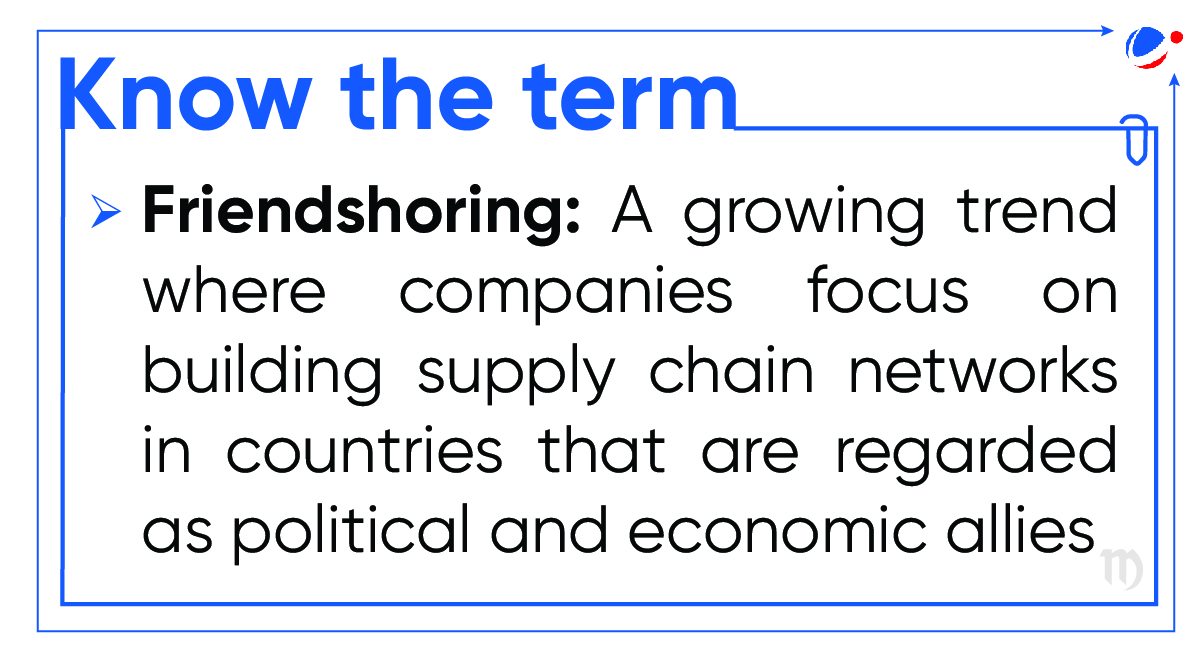Why in the news?
The India Employment Outlook 2030 by ORF has highlighted that about 24.3% of the incremental global workforce over the next decade will come from India.
Global labour market scenario
- Shrinking working age population: Many high-income countries are experiencing rapid demographic shifts characterized by declining birth rates.
- By 2050, the working-age populations in these countries will have shrunk by more than 92 million.
- Ageing population: Elderly populations (65 and older) will grow by over 100 millionin many high-income countries.
- Working-age individuals are essential for contributing to pension and healthcare systems that support the older generation, thus maintaining financial and social stability.
- Globalized Job Market: Increasing accessibility to digital systems, alongside increasing acceptance of teamwork with colleagues who are not co-located, has enabled more globalized talent value chains.
- Shifting international trade: Significant churning and shifts in international trade due to geopolitical situations, trade restrictions and friendshoring has affected changes in job markets and associated wages.

India's demographic advantage
- Working population: India's population exceeds 1.4 billion, nearly 65% of whom are of working age (15–64 years), and more than 27% between the ages of 15 and 24.
- This surplus labour force presents an opportunity to bridge the gap between labour demand and supply in advanced nations.
- Bridging Skill Gap: The 'Global Skill Gap Study' by National Skill Development Corporation (NSDC) showed a growing demand for Indian talent across diverse sectors worldwide.
- Projections indicate significant demand in regions such as UAE, Saudi Arabia, Qatar, Germany, Netherlands, UK, Sweden, Switzerland, Australia, New Zealand, Canada, USA etc.
- Dual advantage: With a relatively young population (median age of 28.4 years), India not only gets a competitive advantage in terms of workforce but also an opportunity to unleash the consumption power of a young population.
- Previous Successes: India's success in exporting IT and BPO services is a good example of how India has leveraged its demographic advantage.
Impacts of labour mobility
- Global Productivity enhancement: Labour mobility can connect potential migrants with employers in need, enhancing global equity and productivity.
- Poverty alleviation: Workers moving to richer countries can expect to increase their incomes by 6 to 15 times, significantly alleviating poverty.
- Social welfare: The positive impacts of labour mobility extend beyond individual migrants. Remittances sent back home by migrant workers can play a crucial role in improved healthcare, education and welfare.
- In 2022, India received over US$ 111 billion in remittances, making it the first country to surpass the US$ 100 billion mark.
- Long-term impact on India's labour market: Mass migration of workers may have a long-term impact on India's skill development, and potential brain drain, adversely affecting the sectors like healthcare and construction.
Initiatives taken for utilization of India's demographic advantage
|
Challenges in labour mobility
- Covid-19 impact: The pandemic severely impacted migrant workers, particularly those in low-skilled jobs, leading to significant job losses and debt.
- Anti-immigration policies and sentiments: Anti-immigrant sentiments and restrictive immigration policies in many high-income countries create barriers for potential migrants.
- Complex processes: Many countries have complex immigration processes that can deter potential migrants.
- Additionally, there is often a lack of comprehensive integration programs to help migrants adapt to their new environments and become productive members of society.
- Increasing automation: Automation and groundbreaking advancements in technology such as Artificial Intelligence are fundamentally changing the nature of work.
Way Forward
- Understanding global labour demand: India can strategically align its labour supply with the demands of advanced economies, ensuring mutual economic growth and integration.
- Skill Development: India must invest in skilling initiatives to equip its workforce with the necessary skills to meet international market needs, especially in sectors where there is labour shortage in high income countries.
- Investing in Indian educational and vocational institutions can build a robust skilling ecosystem that meets global standards.
- International agreements: Enhance bilateral and multilateral agreements to facilitate labour mobility.
- Simplifying immigration processes, providing clear information about migration opportunities, and offering support services for migrants can make the process more accessible and efficient.
- Public awareness: Addressing negative public perceptions through public awareness campaigns and highlighting the positive contributions of migrants can help create a more favourable environment for labour mobility.
- Reducing costs: Reducing labour mobility transaction costs and ensuring the smooth reintegration of returning workers into the Indian labour market.
- Women empowerment: Getting more women to enter the workforce will be pivotal, as only 24% were participating in 2022, according to ILO estimates.



